Experimental Music, Research, and Louisiana
Rachel Gibson ’20
Music has taken me on some incredible journeys. Over the past month, I have been on a research fellowship in Baton Rouge at Louisiana State University (LSU).
All over the country, the National Science Foundation (NSF) funds Research Experiences for Undergraduates (REU), which are fellowships that take place on different college campuses. The topics of REUs range widely, but all of them are science or STEM-related in one way or another. I did not know too much about them until after I applied, and I later found out that they are very competitive programs. Fellows usually get a generous stipend, free housing, and money to cover transportation to and from the campus.
After a summer participating in the Oberlin College Research Fellowship (OCRF), I realized that my second summer in this fellowship could take place off campus. I began googling for interdisciplinary research experiences when the holidays came around last year. Weirdly enough, I found two REU programs that seemed to fit my bill. One of them specifically asked for students with a background in music and technology (like programming skills), and the other was for various different kinds of interdisciplinary work in the sciences, one of which was music.
So, I was like, "What the heck, I'll give it my best shot and apply." I knew that if I did not get admitted, I would be just as happy doing research again on campus. I did not expect much, and I was not quite sure if they were looking for a full-time music student with a little background in technology or a full-time computer science student with a little background in music. In fact, I did not even have anyone proofread my personal statements for the programs except for my significant other.
When March rolled around, I received a letter of admission for the program from one of them! I was pretty surprised. Soon after, I learned that I was accepted into a second REU. I ended up choosing the program at LSU because they have an experimental music program that is similar to our TIMARA program here. So the projects they offered seemed to align closely to my research interests. Both of my assigned research mentors are in music and technology, just like me! I was beyond excited to work with them. The REU was focused on interdisciplinary work within the sciences at LSU's Center for Computation and Technology (CCT). All of our activities were in this building, known as the Digital Media Center. The facilities were super nice because the building is fairly new. The third floor of the building housed the Electronic Arts (EA) company. There were people there working on video games and beta-testing for EA. The other two floors have all the professors' offices and student workspaces.
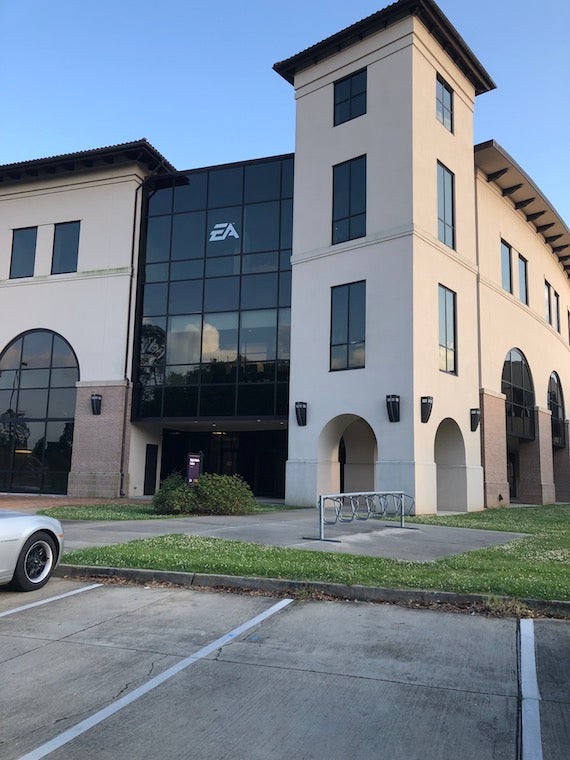

I flew directly from Cleveland to Baton Rouge on May 20, and I was able to get settled into my apartment. Our program consists of 10 people, but there are other REUs going on at LSU as well. It was nice to have roommates, and everyone in my program was fun to be around.
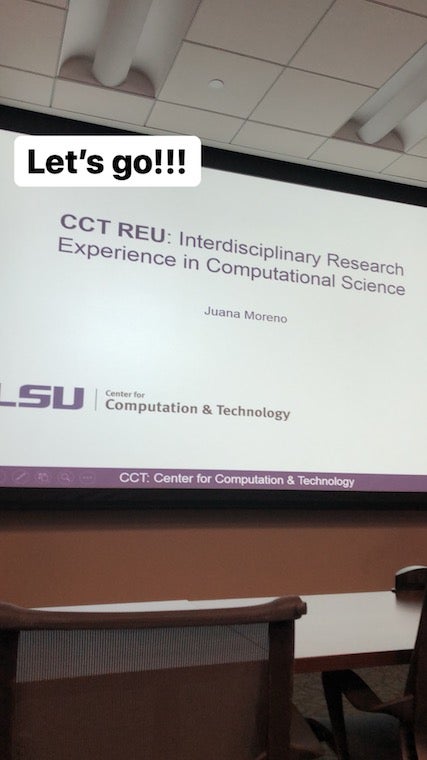
During our first week here they took us on a trip to New Orleans. It was amazing and beautiful. We spent our time in the French Quarter. So many things were going on in the streets. I particularly liked the artists selling their artwork there. The shops were super cool as well. I was most interested in the voodoo stores.
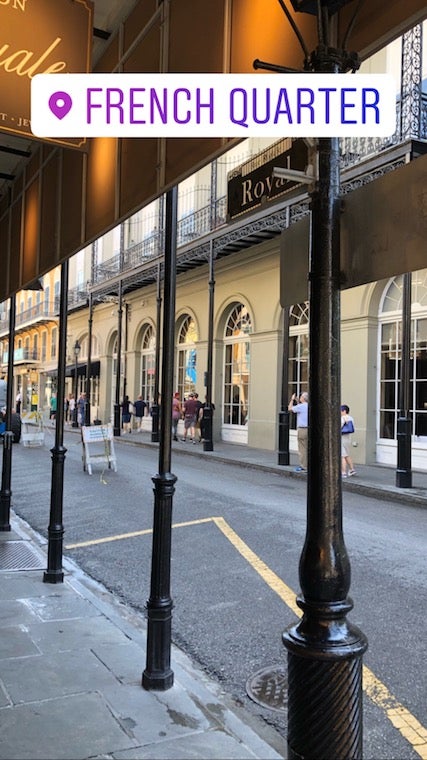
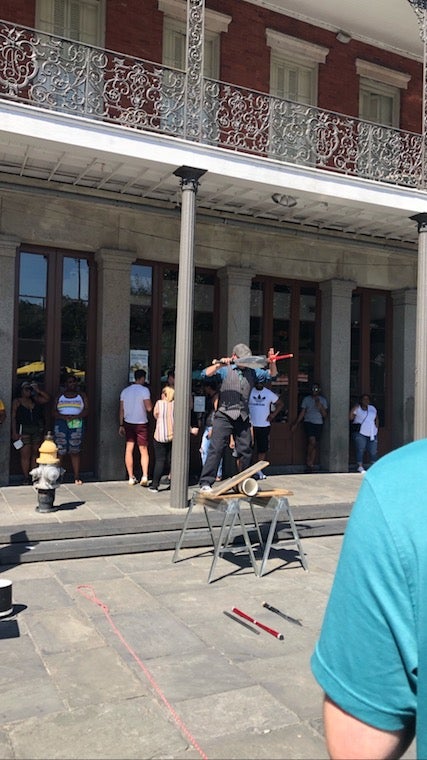
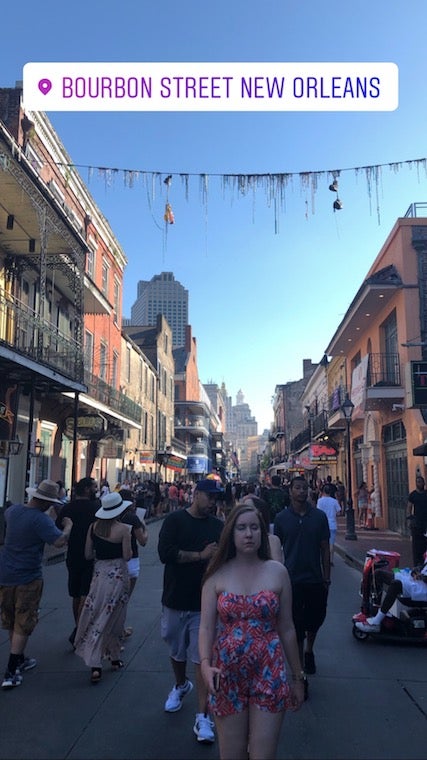
LSU's campus must be at least ten times bigger than Oberlin's is. However, I appreciated how it was still small enough that you could walk to your destinations, so I adjusted easily. There was also public transportation, which was cool because I could get around without walking in the heat.
My main workspace was the Media Interaction Lab and Library (MILL), and this is one of the places where students can work on fabricating musical instruments. I was particularly fond of the sneaky Doctor Who references.
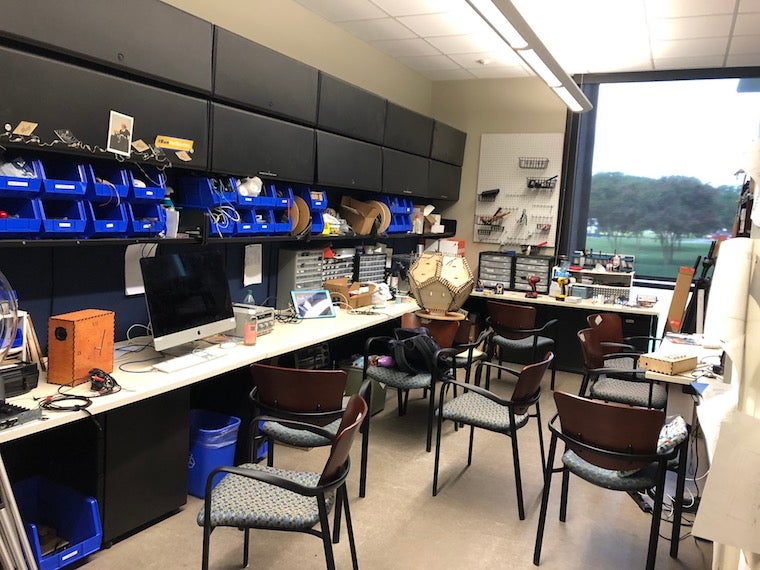
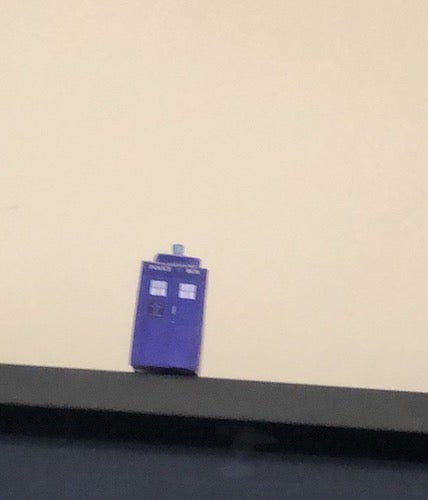
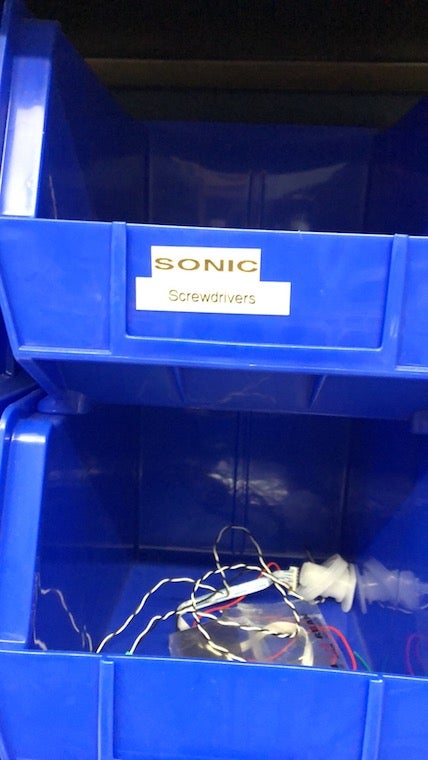
Once the program finally kicked off, everyone set to work on their research projects. The REU provided a coding bootcamp the week after everything started, which focused on machine learning, deep learning, Python, and programming in R.
Every Tuesday, we had mentor presentations, which was where our mentors would give a PowerPoint presentation on their career path and their research. This gave us a chance to see the work that they were pursuing and what brought them into their respective fields. One of the biggest takeaways was that it seemed like no one ever expected to end up in the place they are in now, but they were much happier with the outcome in the end!
On Fridays, we would have "Student Updates," which was moderated by a different mentor each week. Here, we would each talk about our progress on our projects. Overall, it gave everyone a chance to practice just simply talking about our research in front of others.
Towards the end of the program, we had two sessions where we learned tips and tricks on designing effective research posters. I thought these were extremely helpful, and I think I was able to improve my poster presentation skills. Two afternoons were set aside for us to present our posters to two of the REU mentors, who gave us feedback on them. One of the biggest lessons I learned was to just keep the text to its absolute minimum to make it easy to read.
The REU program planned several fun events for us as well, like a game night and a trip to LIGO, or the Laser Interferometer Gravitational-Wave Observatory, which is really close to Baton Rouge. This observatory was built to detect gravitational waves, and it won a Nobel Prize a few years back for detecting them. They had all sorts of cool hands-on exhibits, and I was surprised to see how many of them were sound-related.
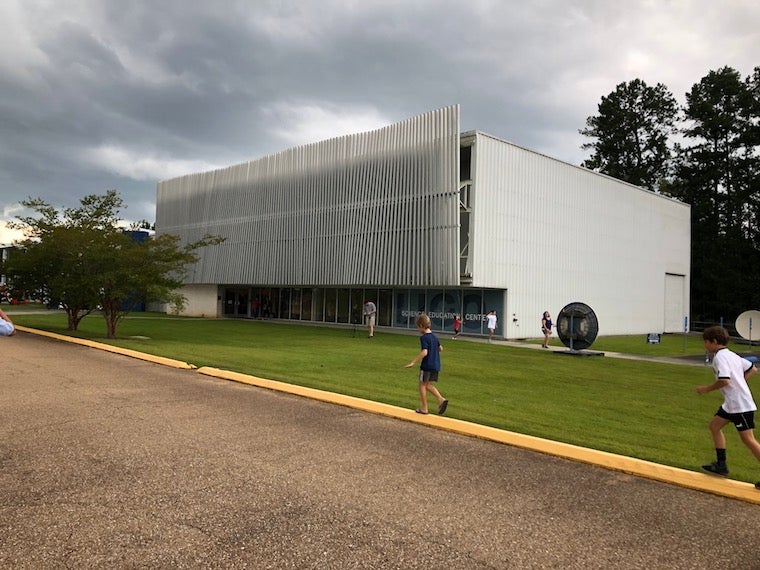
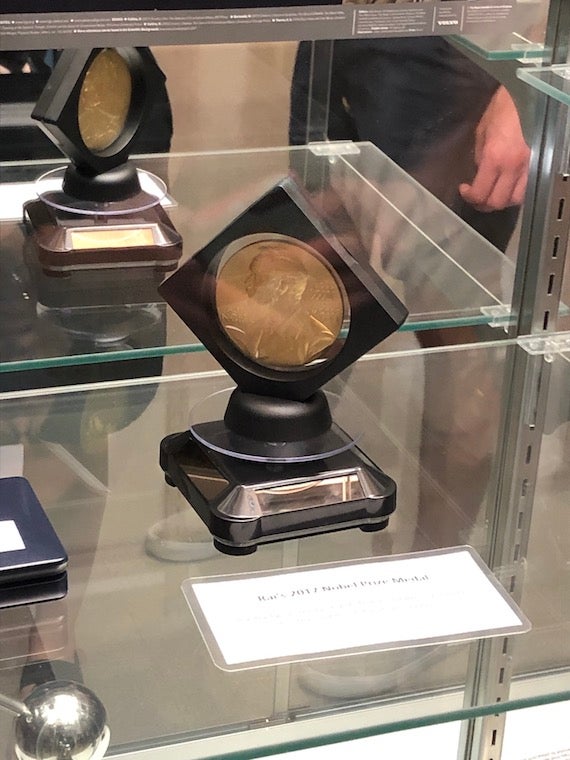
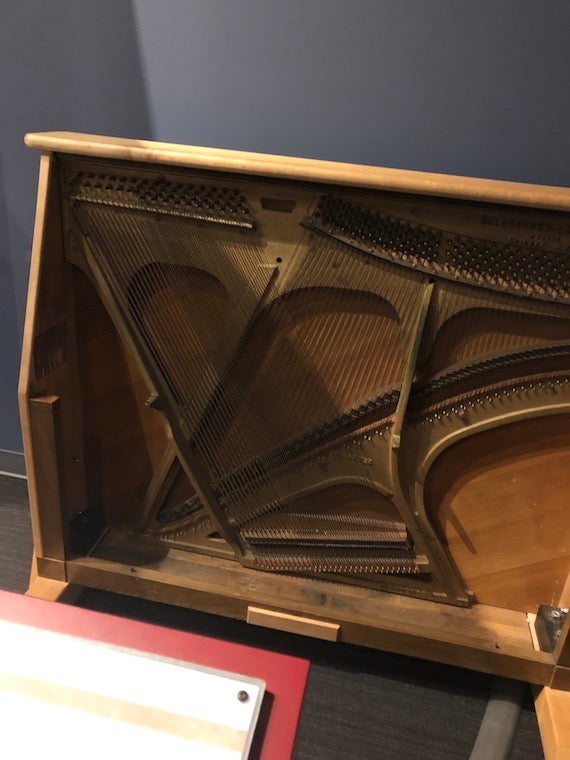
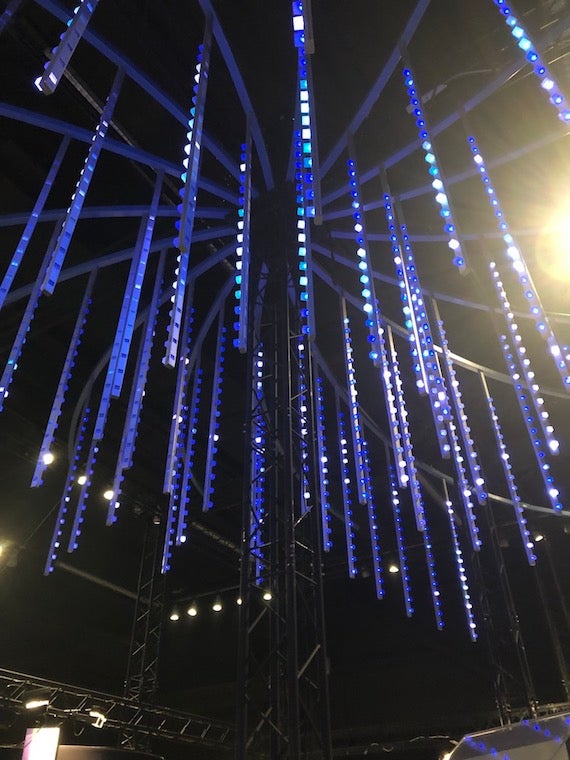
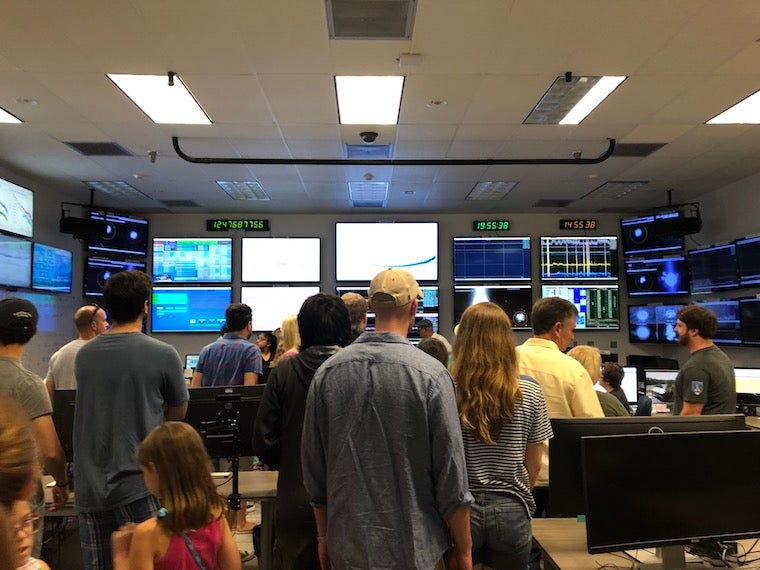
Amidst all of this, I did actually do research too. My project was to create a new electronic musical instrument. My mentors were Edgar Berdahl and Stephen Beck, and they are both professors in LSU's experimental music program. I usually met with them once or twice a week to work on my project. I felt like they really understood what my goals were, and they allowed me to pursue a project that sparked my interest. They were both encouraging and supportive of my ideas as well.
Before coming into this program, I was interested in non-tactile gesture, inspired by the theremin, the first electronic musical instrument that introduced this idea. However, I wanted to use infrared proximity sensors, which tracked how close something was to it, but you don't have to physically touch the sensors. In addition, I liked the idea of creating a visual experience with light. And so, IRIS was born. IRIS, or InfraRed Instrument of Stars, is based off of children's star lamps, some of which are dodecahedron-shaped. I designed each panel of the dodecahedron with a different constellation chart. We laser-cut the dodecahedron out of wood, and all of the star charts on each panel were laser-cut as well. Essentially, we created a big star lamp! Three LEDs inside of IRIS allow the constellations to be projected onto the ceiling, and it looked SO cool. I had a lot of doubts, and I was skeptical about if we could really make a weirdly-shaped instrument, but everything came through. It was everything I could have ever dreamed of and hoped for. Each side has two infrared sensors on it, and because of its shape, the sensors create a spherical plane of interaction around the instrument. However, you never actually have to touch the instrument to play it, which makes it "non-tactile."
Particularly, I liked how the shape of IRIS actually forces the performer to move around it to play it. It also expands the idea of a traditional musical instrument since it incorporates both visuals (the projection of a night sky) and sound, make it an immersive, sonic environment. It was also built to be extremely versatile, and you could easily configure it so that multiple people can play around it. I think its biggest selling point is that you could play it as a soloist or as an ensemble with others.
IRIS recognizes certain hand placements around it and will play a corresponding sound associated with each hand placement. I was using open-source machine-learning software to train an algorithm. The sensor data actually became the training data that was used by the algorithm to learn. I will be working on this project throughout the year, composing pieces for IRIS, maybe even having an installation focused on it. Many commented that it would be amazing to collaborate with a dancer or choreograph something with it, because of the movement that is involved in playing. Ultimately, I hope to write a paper on the design and data mapping process for a conference that is happening next year.
One of the things that drew me to exploring the idea of "no-contact gesture" is that when I first saw the theremin, I thought it was truly magical, and I instantly fell in love with it. I think that being able to create music without touch is like the closest thing we have to magic. It makes the player very vulnerable in a way because they don't have anything to "ground" them, like how I hold sticks when I play a percussion instrument, or how a violinist has to actually hold a violin and bow to play. When you play theremin, you literally have nothing to hold onto. I really hope to explore this idea of "playing the air" more once the school year starts.
During July, I was slowly running out of time, and it almost seemed like I wouldn't be able to complete the project. But I was determined to get it done. I worked all day every day and on weekends. Honestly, though, it truly made me happy to work on the project, and at the end of each day, I felt completely energized and excited to keep going. I was able to finish it just in time, and I am extremely happy with the outcomes.
The whole program culminated in a final presentation and a research poster session called SURF, or Summer Undergraduate Research Forum. SURF is where all the REU students on LSU's campus present a poster, and the forum is open to the public. I met an Obie alumnus (a professor now at LSU) looking at the posters too. Obies are actually everywhere!!
I thought both of these went well, and a lot of people had fun trying out IRIS. Someone taking pictures mentioned to me that he liked seeing how so many people were smiling when they were playing it. This put things into perspective for me because in the end, to me, that is what it's really about. Making and creating things that make people happy.
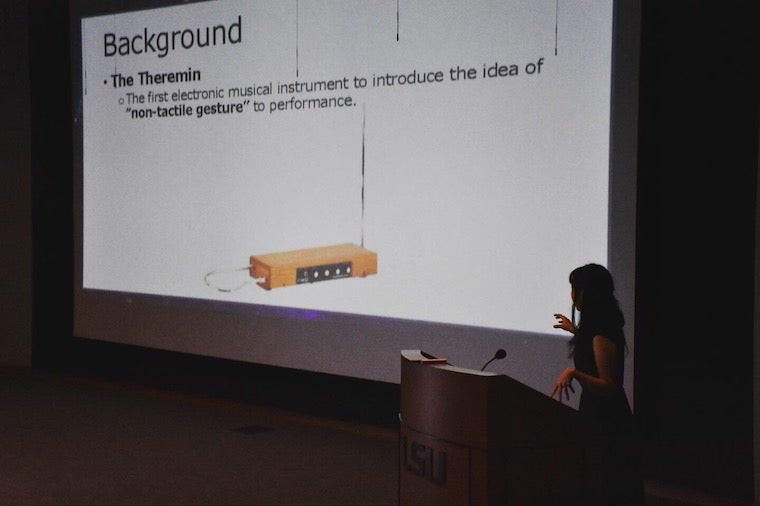
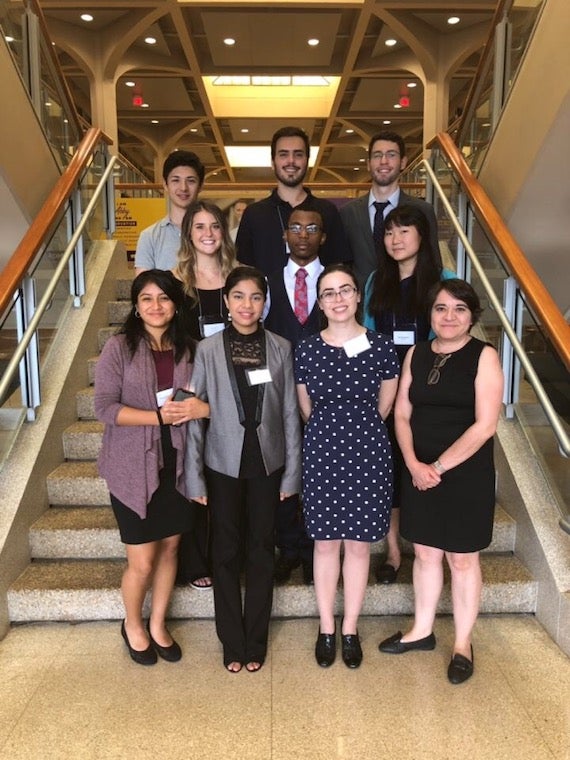
(Photo by LSU's Center for Computation and Technology)
I made so many friends through this program, and I learned about a ton of different disciplines in the sciences. I will never forget my time here. It was really refreshing to be in a new environment! One of the saddest things about the program ending is when will I ever see the rest of my group ever again? I have a feeling one day we will all cross paths again soon.
Through this project, my mentors helped me find what I truly love about experimental music. They offered great constructive feedback, insight, and knowledge that I will always carry with me. And I can't wait to share everything I learned with the folks back at Oberlin.
Check out the IRIS demo video:
Tags:
Similar Blog Entries
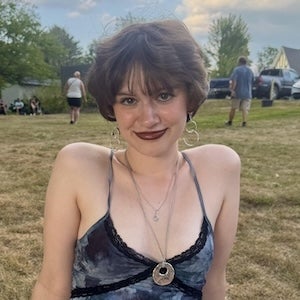
Rebekah’s 2025 Performance Wrapped (Part Two)
Part two of all of my performances this year!

Rebekah's 2025 Performance Wrapped (Part One)
This is part one of my performance wrapped - looking back on all of my performances of 2025!!!
